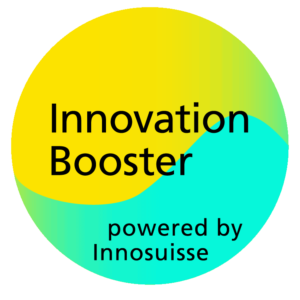Claude Meylan participates again in this 4th loop to our selection.
In this pitch of his idea, he presents the aim of this new idea and is looking for partners in the field of aircraft maintenance to complete the actual team involved in the project.
Through his idea and the feasibility studies, if it wins this selection supported by Innosuisse, aim at proving the effectiveness of this detector and device in which it will be incorporated.
To have more informations on this project, view his pitch and read his interview.
Interview
Context
IRIS has validated a germanium-tin alloy deposition process for the production of photodiodes operating in the SWIR. In parallel, a team from the Inorganic Chemistry Laboratory of ETHZ has just developed a perovskite alloy with properties that may be suitable for the non-destructive testing application that we are considering here. Before realizing a dual detection system allowing both detections by X-rays and infrared, it is nevertheless necessary to ensure that their respective contribution are confirmed by preliminary tests.
What is your idea ?
For the detection and characterization of delaminations, a non-destructive testing system for composite aircraft structures can use X-rays. However, this technique is slow and expensive. It is therefore only associated with the use of other means – for example ultrasound or infrared – that it can prove to be effective. The project idea that we propose here consists of using a new perovskite alloy in a sensor with direct conversion mode to make X-ray detection more advantageous. Demonstration of the effectiveness of this new sensor for non-destructive testing will make it possible to envisage the creation of a fast, low-cost dual detection system.
To whom this innovation is aimed at, and who will be the end user of this innovation ?
This innovation is aimed at companies that provide ground maintenance for aircraft fuselages and wings, as well as equipment suppliers for this application.
In which application areas/fields could this innovation be useful ?
Our idea aims to facilitate the non-destructive testing of aircraft on the ground – in particular the identification and characterization of delaminations – and to reduce the cost of inspection.
What will be the benefits of this innovation ?
The ultimate goal of this project is to provide maintenance personnel with the tools to perform rapid and efficient inspection of composite parts of aircraft. Knowing that X-rays are part of the solution, it is a question of confirming the opportunity represented by new sensors with direct conversion mode.
The feasibility study that we propose to carry out consists in various tests and characterizations on composite elements to verify the potential contribution of a new type of perovskite-based sensor for X-ray inspection of composite parts.
Which partners are you looking for ?
Collaborations are being concluded with ETHZ (sensors), USMB/UTBM (composites parts) and a research group in Germany with the X-ray equipment that we wanted to operate as well as qualified operators.
Apart from the partners already involved in these developments, we would like to be able to count on the commitment of service providers or equipment supplier in the field of aircraft maintenance.
About you and your project team
So far, who is part of your project team ?
Claude Meylan, CEO and François Jeanneret, Head of Engineering at IRIS Switzerland Sàrl, a start-up with the aim of developing and commercializing flash LiDARs operating in the short-wave infrared (SWIR), mainly for autonomous ground vehicles and portable devices, as well as sensors and systems for non-destructive testing and quality control.
During the last loop of selection, you already presented an idea and won the 20 KCHF for the feasibility study. What motivated you to present an other idea on the platform?
This is another opportunity to validate additional features of the combined non-destructive testing platform we would like develop.
How was the process of selection during the loop, according to you ?
The selection process starts as we are looking for support. The presentation of the initial idea is already an opportunity to discuss the application with relevant partners. The process is a good way to start with before incurring high costs of development and to identify the right partners that will help to ensure focus and effectiveness of our efforts.
Why would you recommend people to participate to this initiative, supported by InnoSuisse ?
If you want to validate an idea quickly, give yourself a chance with this Booster! You will be surprised by the relevance of the approach and by its effects on your research activities.
What are the benefits, apart the financial benefits for the feasibility study ?
The most visible effect is the meeting of partners around your project idea, with development prospects which multiply.

